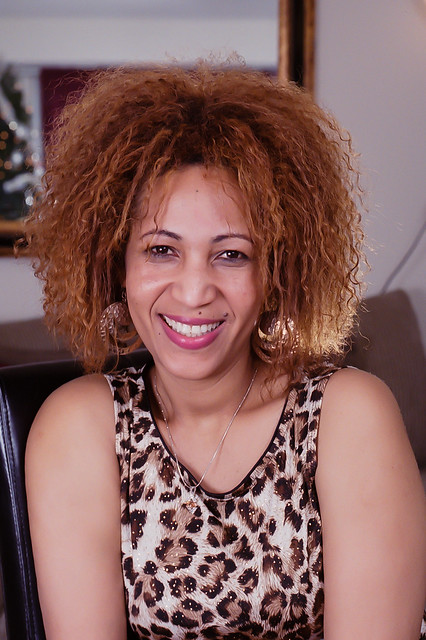The simple definition of a Strobist is a photographer that employs usually more than one flash off the camera axis. What this does is remove that harsh blast of frontal light that alters proper skin tones, creates red eye, creates harsh shadows behind your subject or under the eyes and chin, blacks out your background, and generally makes for bad photos. Strobist techniques allow unlimited possibilities for creativity and gives you complete control over the lighting in your photos. You can create a really dramatic film noir feeling or a glamorous high-key look to your photos with just a little practice. Just a few short years ago (and for about a hundred years) all the magazines and publications used film cameras for their photos taken in the studio.
There are literally hundreds of different methods that a strobist can employ to achieve their end; color filter gels, flaps, tubes or baffles that control or restrict the light, umbrellas and soft boxes to soften the light, but my purpose here is to inform you of how these techniques can be adapted to film photography in particular as there are lots of websites that will teach strobist techniques.
A real strobist, whether using film or digital, operates in manual exposure mode not any type of auto exposure or program mode. The aperture setting, shutter speed, light output level and of course film speed or ASA are the factors that must be calculated to determine the correct exposure. These factors are input and calculated with a flash meter. After the film speed and shutter speed are input into the flash meter, you then prepare it to measure the speed lights when they fire. You do this by holding the flash meter in front of your subject with the white dome facing out. You then click your flash triggers which fire the flashes and allow the light meter to read the light levels and advise you as to the corrected settings for your lighting situation.
Take several readings so you can know exactly how your subject is being lit. Lets say for example that while photographing a portrait your flash meter reads an f2.8 at the face but an f4 on the subjects clothing. The meter is advising you that the scene is unevenly lit and you have a two-stop difference between the subjects face and clothing. In this example the face is receiving less light and requires f2.8 for correct exposure while the clothing which metered at f4 may be too brightly lit at f2.8 since the meter read f4.
If you want the classic shadow on one side of the face and the other side more brightly lit just ensure that the one side of the face is maybe a stop and a half or more lower than the other side. This technique is amazingly accurate and yields the exact results that I expected.
Don't stop there, measure the light levels all over your scene-even under the chin of your subject which can cause really ugly shadows. I generally check the entire scene from left to right so there are no surprises.
Nikon speed lights, even older ones like my SB-24s, circa 1994 are great for Strobists because they allow you to change the brightness of the flash output and they seemingly last forever.
 |
| My beautiful wife photographed with a pair of Nikon Speedlights mounted on flash stands with umbrellas. Nikon FE-2 with a $25.00 Nikkor 50mm f1.8 Series-E lens and Fuji Pro400H |
A real strobist, whether using film or digital, operates in manual exposure mode not any type of auto exposure or program mode. The aperture setting, shutter speed, light output level and of course film speed or ASA are the factors that must be calculated to determine the correct exposure. These factors are input and calculated with a flash meter. After the film speed and shutter speed are input into the flash meter, you then prepare it to measure the speed lights when they fire. You do this by holding the flash meter in front of your subject with the white dome facing out. You then click your flash triggers which fire the flashes and allow the light meter to read the light levels and advise you as to the corrected settings for your lighting situation.
Take several readings so you can know exactly how your subject is being lit. Lets say for example that while photographing a portrait your flash meter reads an f2.8 at the face but an f4 on the subjects clothing. The meter is advising you that the scene is unevenly lit and you have a two-stop difference between the subjects face and clothing. In this example the face is receiving less light and requires f2.8 for correct exposure while the clothing which metered at f4 may be too brightly lit at f2.8 since the meter read f4.
If you want the classic shadow on one side of the face and the other side more brightly lit just ensure that the one side of the face is maybe a stop and a half or more lower than the other side. This technique is amazingly accurate and yields the exact results that I expected.
Don't stop there, measure the light levels all over your scene-even under the chin of your subject which can cause really ugly shadows. I generally check the entire scene from left to right so there are no surprises.
Nikon speed lights, even older ones like my SB-24s, circa 1994 are great for Strobists because they allow you to change the brightness of the flash output and they seemingly last forever.

No comments:
Post a Comment